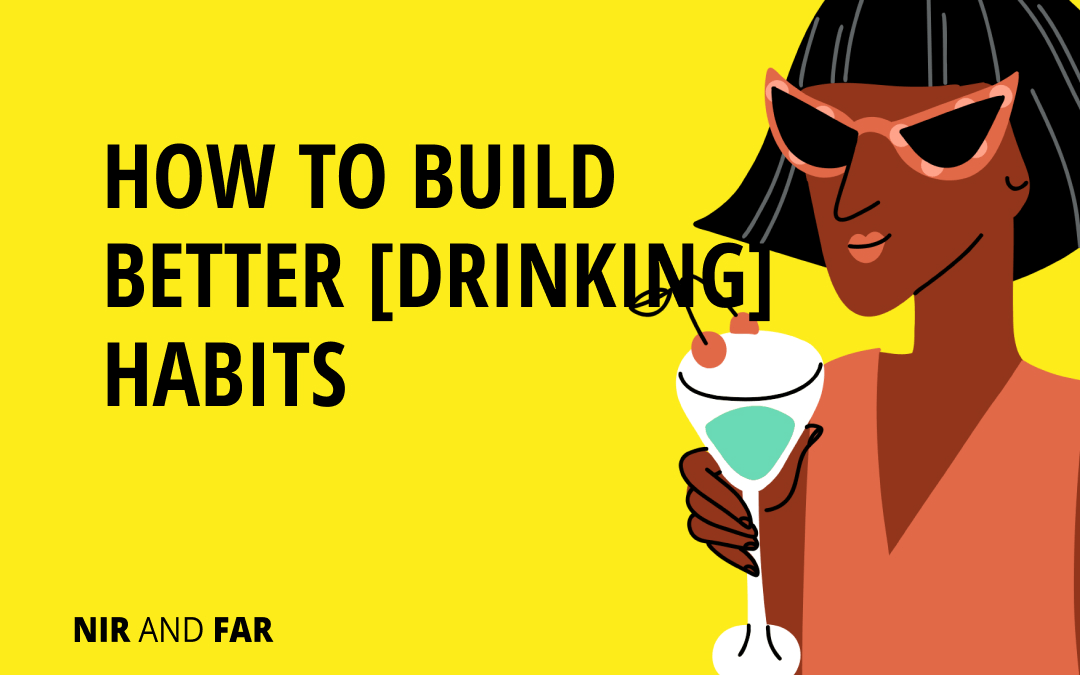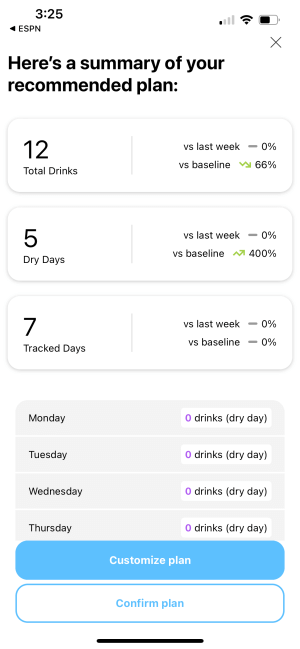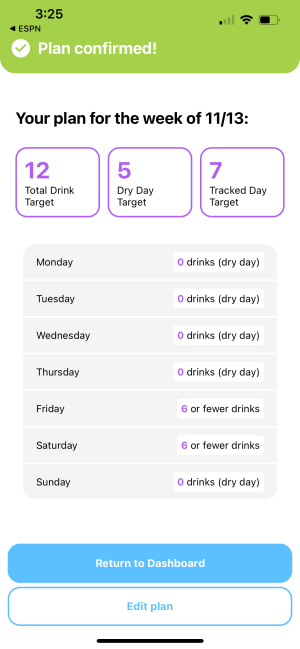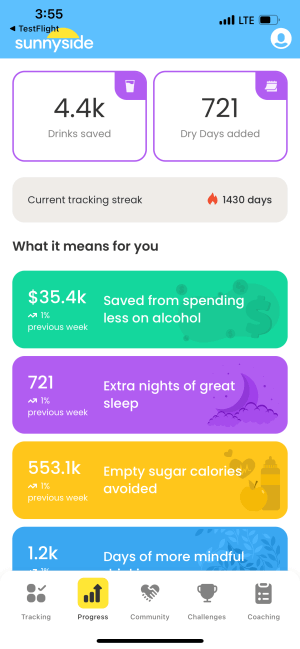As a child of two parents who both struggled with alcoholism, Nick Allen had a choice to make when it came to his own drinking. He could follow the same destructive path his parents took, or he could swear off drinking altogether.
But for Allen, and millions of others like him, all or nothing wasn’t much of a choice. Instead, Allen found a third way and co-founded a multimillion-dollar company in the process: Sunnyside.
Allen told me in an interview, “Over the past two decades … I’ve learned that if I’m not being conscious and intentional about the role alcohol plays in my health, it can quickly become out of balance with my health and life goals. That said, complete sobriety has never felt like the right fit for me.”
Moderation instead of total abstinence best suited Allen’s lifestyle. Yet as he searched for an app that would help him drink mindfully, all he found were apps that pushed sobriety.
So he built an app of his own: the Sunnyside app.
The Sunnyside app unpacks ingrained drinking habits and replaces them with healthier ones that last, empowering people to find a balance with their alcohol consumption.
It’s a terrific example of how technology can change habits for good, and I was delighted to learn Allen and his team used both my books, Hooked and Indistractable, to design their app. I was so impressed with the company, I became an investor.
Sunnyside changes drinking habits by asking members to implement these routines:
- Weekly precommitments
- Timeboxing
- Progress tracking
- Mastering internal triggers
Staying Indistractable with Sunnyside
Sunnyside uses the Indistractable methods of timeboxing and precommitment to help members create an accountability roadmap.
It also emphasizes the Indistractable technique of exploring internal triggers, or negative emotions, with curiosity rather than contempt: When a member has more drinks than intended, for example, Sunnyside doesn’t react punitively; it reacts positively, offering encouragement and support.
“Sunnyside acts as a third-party system of accountability to help you stay in line with the intentions you set for yourself,” Allen said.
Weekly Timeboxing and Reflection
Timeboxing is a powerful time management technique that helps people make time for their values and do what they said they would, when they said they would.
Indistractable recommends reflecting on and refining a timeboxed calendar at the beginning of every week: When did I do what I said I would, and when did I get distracted? Are there changes I can make to my calendar that will give me the time I need to better live out my values?
Every Sunday, Sunnyside uses those techniques to prompt members to create a drinking plan for the week ahead. The app suggests personalized targets for total drinks and dry days based on members’ progress and drinking goals.
By consolidating decision-making into a single point in time, when members’ commitment is high, Sunnyside helps members set their own boundaries. Members reflect on the moments that might trigger them to drink. If they didn’t adhere to their drinking plan the week before, they’re asked to reflect on why, and what might help them avoid slipping in the future.
They then create an implementation intention for the week, allocating a drink target to each day and/or choosing dry days.
Precommitments
A precommitment involves removing a future choice, as a way to overcome impulsivity. It’s key to becoming Indistractable.
By creating a drinking plan, Sunnyside members make a promise to themselves for the week ahead.
Sunnyside holds members accountable to their drinking plan by sending them SMS reminders of their intentions and asking members to track their drinks.
Exploring Internal Triggers with Curiosity
There are four steps to becoming Indistractable, and the first is to master internal triggers. That partly means exploring your emotions without self-criticism. Shaming yourself for feeling a certain way or for not accomplishing a goal will only make you feel worse. Ironically, that may drive you to further seek distraction—potentially by drinking more.
“On off-track days, the app sends you a text message that basically says, ‘Hey, you did your best. Let’s try again today. Here’s your target,’” said Allen.
Sunnyside’s support doesn’t incentivize members to stop tracking their drinks, in contrast to other apps that penalize users by making them restart the process if they have a drink over the limit.
As a result, 85 percent of Sunnyside members track their drinks at least five days a week. “What we see with the constructive, positive language of Sunnyside is that our members are extremely, deeply engaged,” Allen said.
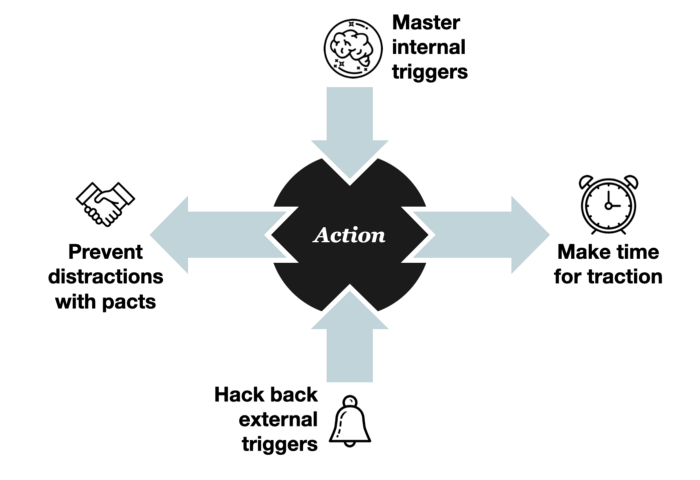
The Indistractable Model
The Sunnyside Hooked Model
The Hooked Model is a design pattern to connect a user’s problem to a habit-forming product. It has four phases: a trigger to prompt using the product, an action that’s the simplest behavior done in anticipation of a reward, a variable reward that satisfies the user’s need, and an investment that, ultimately, makes the product more valuable over time. As users go through these phases, they build new habits.
Here’s how Sunnyside applies the Hooked Model to engage users.
Behavior Can Be Designed.
Download our course on Product Psychology.
Your email address is safe. I don't do the spam thing. Unsubscribe anytime. Privacy Policy.
Trigger
Sunnyside uses text messages as an external trigger that nudges members at the right time to stave off bad routines.
“We send tailored, adaptive text messages that create new external triggers around the time when internal triggers tend to take over and push folks toward mindless drinking,” explained Allen.
By intercepting members’ internal triggers that might drive them to drink, such as anxiety, Sunnyside disrupts that behavior and suggests healthier replacement behaviors.
Action
Investment
As members log their drinks or dry days, they invest time in Sunnyside and build up their personal data, improving the app’s insights. The dashboard helps members visualize their progress by showing how many drinks they avoided, how many calories they cut, and how much money they saved.
“We have this tight loop around logging consumption,” Allen explained. “It drives a deeper, more personalized experience of the product over time. By engaging users to go through the Hooked loop again and again, Sunnyside helps them hack back at those automated drinking routines.”
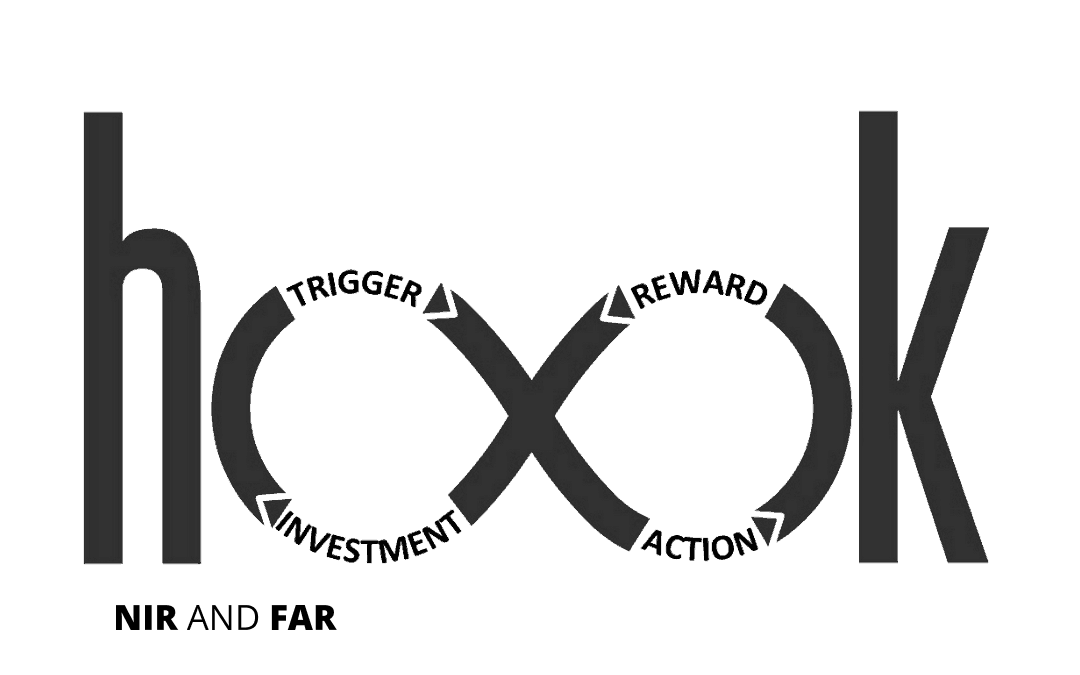
The Hooked Model Consists of 4 Stages
Results
Sunnyside works with an independent team of researchers from Brown and Hofstra universities to understand and validate the efficacy of its program.
In their first 30 days, Sunnyside members on average reduce their number of drinks by 29 percent, avoid 1,500 calories, and save more than $50. In the first 12 weeks of the program, members see a 32 percent reduction in weekly total alcohol consumption.
The app produces fast results. But even more impressive is this: Members use Sunnyside to maintain those gains for years, sustaining that average 32 percent reduction and in many cases reducing their alcohol consumption further from there. Sunnyside doesn’t promote drinking in moderation as a fad. The app is designed to help users keep long-lasting, healthy drinking habits.
As Allen said, “Sunnyside shifts the frame of alcohol-use treatment from one that’s reactive and somber toward one that’s proactive and positive and about making an investment in your wellness for the long term.”
Impressed by what Sunnyside has achieved using Hooked? You too can use the Hooked Model to help people build healthy habits through your app. Learn how by signing up for my online course, “How to Build Habit-Forming Products.”
Related Articles
- Schedule Maker: a Google Sheet to Plan Your Week
- Habit Tracker Template in Google Sheets
- The Ultimate Core Values List: Your Guide to Personal Growth
- Timeboxing: Why It Works and How to Get Started in 2024
- An Illustrated Guide to the 4 Types of Liars
- Hyperbolic Discounting: Why You Make Terrible Life Choices
- Happiness Hack: This One Ritual Made Me Much Happier
